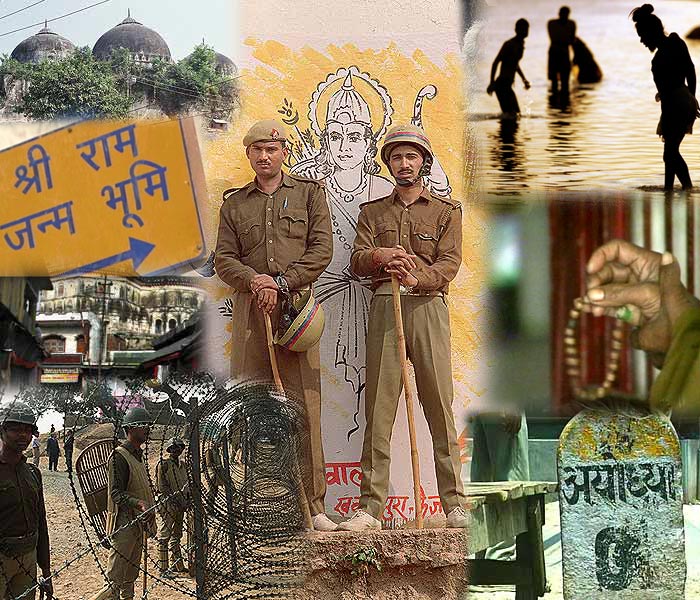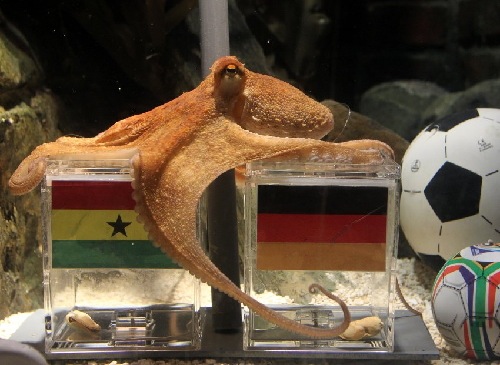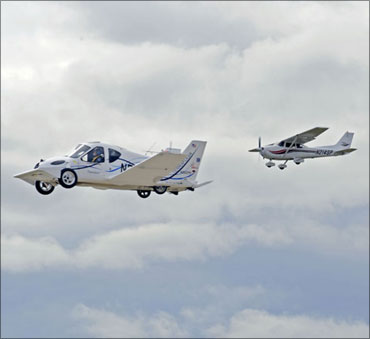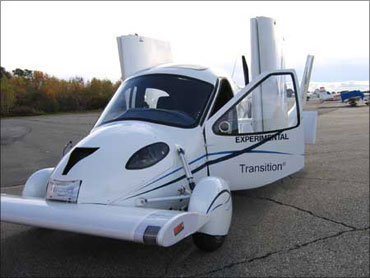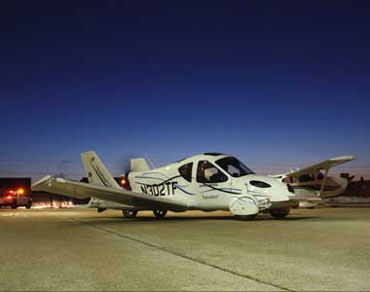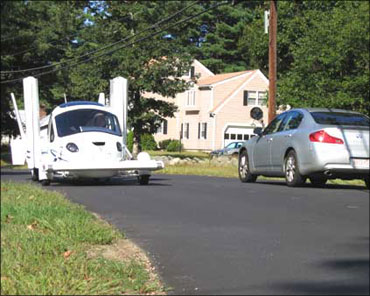At around 12.15 pm, Judge Madan Tahilyani arrived late in the courtroom which was packed to the capacity. He was about to deliver the verdict on the case known as the 26/11 Mumbai attacks. This was the unique case where a Pakistani national Ajmal Kasab was tried in a terrorism case in India .
It was the case where India and Pakistan are engaged in high-level diplomacy. This is the case whose potential is still unfolding.
This is the case which India is showcasing to Pakistan that in India the 'rule of law' prevails and court judgements are free and fair. This is the case whose verdict will bleed many families in Pakistan because they know their children died for a useless and fruitless cause which was not worth fighting for.
Kasab, the main accused, came minutes after court started. He was gheraoed by policemen as soon as he sat next to Fahim on the bench. He was wearing a white salwar kameez, clean but wrinkled. He had a little stubble on his face. He kept looking at the floor. For almost next 90 minutes he didn't move. Not even once did he turn around to look at the media's enclosure to his left. When the court proceedings began on May 8, 2009, Kasab used to look into eyes of many media men and women frequently. The judge used to reprimand him for his playful conduct.
But since last the few months, his solitary confinement is having an effect. Ramesh Mahale, chief investigating officer, disagrees. He claims Kasab is playing smart. He says, "Only in the courtroom, before the media, he is 'acting'. Otherwise he behaves normally."
However, on Monday, when he was about to be declared guilty Kasab sat on the bench like a wooden statue. No emotions and no eye contact. It's difficult to judge anyone correctly without having eye contact.
This lone-surviving Pakistani accused, who has a Rs 300 million security operation around him, was the centre of attraction.
Judge Tahilyani took his own time to read the final verdict. He ensured that television journalists kept patience and listened to him. He forbade the media from leaving court till his entire explanation was over. This courtroom has many air conditioners, a fine audio system and full-proof security.
He told journalists, who wanted to flash the news of Kasab's conviction, "Don't leave the room till I give permission." Tahilyani has his way of handling situation with a carrot and stick approach.
Before pronouncing the historic verdict, the judge told Kasab to stand up in his box.
Then, in Hindi he told Kasab that, "Aap ke khilaf khun karne ki aur saazish karne ka aarop hai. (You were charged for murder and conspiracy) You are found guilty."
He also tried to educate journalists by giving a detailed account of his verdict. He said his verdict is 1,522 pages long. "I am not going to read the entire verdict," he said.
Then, he went on to explain in detail that since the case was so voluminous he has made it simpler by preparing 14 tables. That are attached to the verdict and all details of the tables are explained in the findings.
He said this case contained large numbers of casualties, arms and ammunitions so to sum up all details in context he has prepared tables.
Like the first table contained the nature of crime committed, which police company was assigned investigations and name of the police investigations under which place the crime falls. Table two gave entire details of 166 deaths in the attacks. A column in the table showed where they were killed, another column on nature of injuries.
The third table attached to the judgment showed 238 injured people's names and a column narrating the nature of injuries, details of medical examination/treatment.
Another table showed the details of medical reports, nature of injuries etc. One table showed a panchnama made of arms like AK-47 rifles and pistols. Table nine and ten showed details of all empties and bullets and cartridges found at the places of crime. The judge said that tables show details of seizures and comments of the ballistic reports. Table 14 showed various types of DNA tests that the court got.
Interestingly, Monday's judgment has accepted almost all the investigation into 26/11 except Arun Jhadhav, a Mumbai policeman's statement that the court found 'exaggerated'.
Jadhav was in the police vehicle in which senior police officers Hemant Karkare [ Images ], Vijay Salaskar and Ashok Kamte [ Images ] were killed. Also, the court has said it's not sure how Karkare and Kamte were killed because the bullets went through their bodies and empties found around didn't match with the terrorists' rifles.
As soon as judge started narrating how he has accepted that Kasab had forged an I-card of an Indian college and said he has convicted him for forgery, there was an excitement in the courtroom. The judge acknowledged that the US Federal Bureau of Investigations testimony was important. He said that the FBI's findings on the global positioning system used by the terrorists was vital. FBI's proof of how ten terrorists travelled from Karachi to Mumbai was accepted as evidence.
It was music to ears of Public Prosecutor Ujjawal Nikam when the judge, in his first half hour, kept saying, "I have accepted your case."
As he started accepting the evidence one by one, many knew, as expected, that Kasab will be pronounced guilty. The judge first talked about Kasab's offence of around 66 deaths under Section 302 of the Indian Penal Code. He said he found Kasab guilty of directly killing seven people that included policeman Tukaram Ombale. The judge said Kasab's rifle's bullets tally with those on these seven victims.
The court also said that 47 people were killed by Abu Ismail and Kasab. He says he appreciated the prosecution's evidence in this case. The court was very appreciative of photographer Sebastian D'Souza's testimony where he narrated how he took Kasab's picture while he on the killing spree at CST station.
One of the most important things that judge said while delivering the judgment was that he has accepted Kasab's statement made before a magistrate but he has also taken care to see that corroborative evidence is taken into account.
Kasab has retracted his statement that narrated his journey from Pakistan to India and his actions on 26/11. But the judge said Kasab's retraction is 'bald' without any reasons.
He said the law of prudence required that confessions of accused are corroborated by evidence. The judge assured that he has taken care of it. The court's decision was heavily depended on the confession of Kasab that was retracted.
The judge said he has accepted the evidence that Kasab was not at all under duress when he made the confession before the magistrate after his arrest. The court found him guilty of conspiracy charge also for which only circumstantial evidence exists.
The court has found Kasab guilty of deaths that occurred at other places also where he was not present.
The judge made 196 points in the 85-page summary of his 1,522-page judgment. The judge said, "These are crimes committed not by a normal criminal but by a committed man who wanted to wage war against India."

